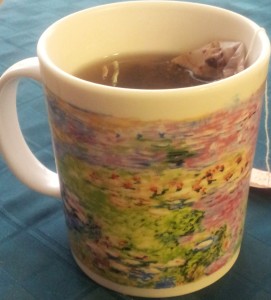All over the northern hemisphere, February is a cold and dark month. Spring seems forever away, and the light and gaiety of the holiday season is far behind. It’s not surprising that it’s a month when colds run rampant, and old remedies for the common sore throat once again assert themselves. When I lived in Bilbao, my favorite thing about having a sore throat in February was the chance to have caramelos de San Blas to ease the discomfort. These lozenges, made from the root of the Althaea officinalis plant, which are typically only sold at this time of the year, are also known as caramelos de Malvavisco. Right at the end of January, you suddenly see them for sale. And any older person will inform you that right after purchasing a bag full of the little hard candies, it is recommended that they be taken to the local church, on the day of San Blas, (which is February 3rd) to have them blessed. This is because San Blas is the patron saint of sore throats. (It’s incredible how much I didn’t know when I went to Spain!)
Getting your lozenges blessed on the day of San Blas in Bilbao is a pretty big deal. Hundreds of people go to the Iglesia de San Nicolas, the Church of St. Nicholas, for the occasion. According to an article in El Correo.com, dated February 3, 2014, the turnout was as large as usual this past Monday, in spite of the rainy, cold weather.
Okay, I will admit that in the eleven years that I lived in Spain, I never once managed to take my caramelos de San Blas to go get them blessed on the appointed saint’s day. My bad. But, fortunately, my mother-in-law always took care of that and she’d bring over a white paper bag with a few dozen consecrated candies, individually wrapped in folded white paper with lots of writing on it. Oh, they were good! If I happened not to have a sore throat at the time, I would save them, tucked away behind the cereal boxes, but at the first twinge, I’d break them out, just in case.
So, is there any truth in the supposed “curative” properties of the plant from which these lozenges are made? I consulted the University of Maryland Medical Center website and found that, indeed, there is. In English, Althea officinalis is called the marshmallow plant–not to be confused with those puffy white things we use for s’mores, although according to Wikipedia, our sugary marshmallows were originally made with Althea extract, though they no longer are. It turns out that Althea, which means “healing” in Greek, is in the mallow family, and has been used for over 2000 years for its medicinal properties. It grows in salty marshes (hence, marsh mallow) and its root contains mucilage, a compound which soothes inflamed mucous membranes, such as those in the throat. According to the same Maryland Medical Center website, people also make tea from marshmallow, and this helps soothe all upper respiratory conditions, and even some bowel conditions. No wonder my mother-in-law swore by it!
If you are lucky enough to get your hands on some of these candies, you could also make cookies with them. I’ve never had these, but I found a recipe on a blog called “biscayenne” and they look amazing.
The other thing to do, they’ll tell you in Bilbao, is to buy some little braided thread necklaces (cordoncillos) and wear them for nine days, tied protectively around your throat beginning on the day of San Blas. (It’s of note that the University of Maryland Medical site did not confirm any curative properties in this custom, but everyone in Bilbao will assure you that the tradition is there for a reason.) So, you wear these little string necklaces, and then on the 12th of February, you remove them and burn them. This seals the immunity they provide. My mom-in-law also brought us these cordoncillos de San Blas, which she took to be blessed at the same time as the lozenges, and I can assure you that it was oddly cathartic to cut these colorful necklaces off after wearing them for the stipulated nine days and burn them with a lighter. (For a picture of the colorful cordoncillos, see the El Correo article mentioned above.)
So, I hope you stay healthy in February, and if you’re in northern Spain, enjoy some caramelos de San Blas!
If you enjoyed this blog post, you might also like my series of novels, Bueno, Sinco and Brujas, which takes place in Santander, Spain.



